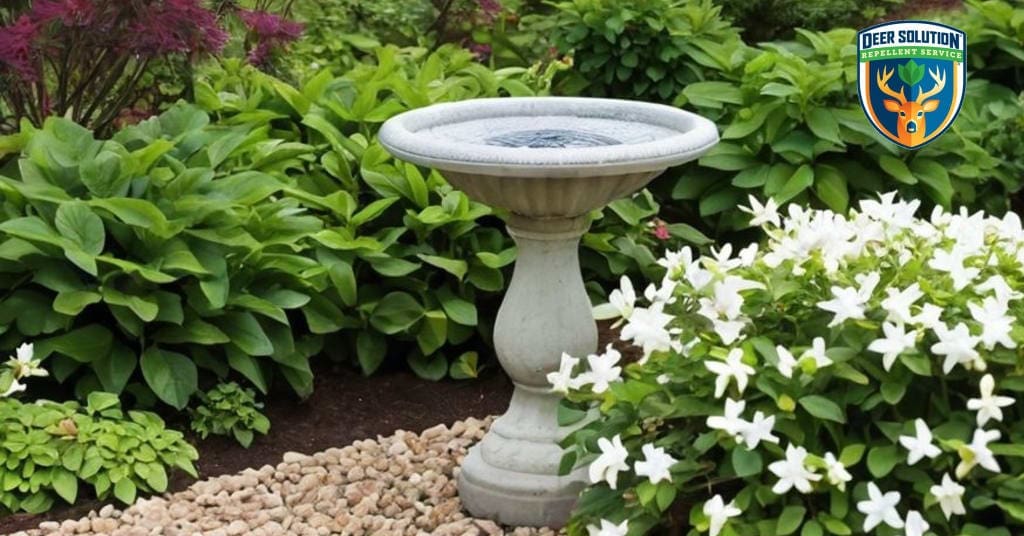The Paperbark Maple (Acer griseum) is cherished by homeowners for its striking exfoliating bark and vibrant fall colors, making it a standout in any landscape. However, as with any beloved plant, there’s always the question of deer browsing: do deer eat Paperbark Maples? Understanding how deer interact with this tree can help protect it and maintain the beauty of your garden. Let’s explore what makes Paperbark Maples special, why deer typically avoid them, and how you can protect your trees from occasional browsing.
Plant Resilience and Hardiness
Paperbark Maples are prized not only for their beauty but also for their ability to withstand challenging environmental conditions. These trees are highly adaptable and resilient, making them a great choice for landscapes where deer pressure might be a concern.
- Drought and Soil Tolerance: Paperbark Maples can thrive in a variety of soils and withstand periods of drought, making them low-maintenance and hardy trees. This resilience helps them recover quickly even if they experience some minor deer browsing.
- Longevity and Growth: These trees are known for their long lifespan and slow, steady growth. Once established, they require little care and continue to develop into mature, striking focal points in your garden.
- Deer Browsing Resistance: While no tree is completely deer-proof, Paperbark Maples’ toughness makes them more resilient to occasional grazing compared to other, more delicate trees.
These qualities make Paperbark Maples a strong choice for gardeners looking for long-lasting trees that can endure various environmental challenges.
Why Deer Avoid Paperbark Maples
While deer are known for browsing on a wide range of vegetation, they generally avoid Paperbark Maples due to the tree’s natural deterrents:
- Coarse Bark: The exfoliating bark of the Paperbark Maple, which gives the tree its distinctive appearance, is rough and unappealing to deer. They prefer smoother, more tender plants to nibble on.
- Leaf Composition: The leaves of the Paperbark Maple are not as enticing as other, more succulent options. The chemical makeup and texture make them less palatable to deer.
- Comparison to Other Maples: While some maples, such as Japanese maples, are frequently targeted by deer, Paperbark Maples offer natural resistance due to their tough structure and unappealing taste. Deer are more likely to target softer, more tender plants.
Though Paperbark Maples are generally less attractive to deer, they may still sample young trees or new growth during times of food scarcity.
Seasonal Deer Behavior
Deer feeding habits change with the seasons, and understanding these patterns can help you protect your Paperbark Maples when they’re most vulnerable.
- Winter and Early Spring: During the colder months, food sources become scarce, and deer are more likely to sample plants they would normally avoid, including Paperbark Maples. Protecting young saplings and new growth during these seasons is especially important.
- Spring and Summer: As more vegetation becomes available, deer tend to focus on softer, more palatable plants. During this time, your mature Paperbark Maples are less likely to be targeted, but young trees should still be monitored.
- Fall Preparation: In the fall, as deer prepare for the winter months, their browsing activity may increase. Ensuring your trees are healthy and well-maintained during this time will help them withstand any minor browsing.
By adjusting your garden protection strategy based on seasonal deer behavior, you can ensure that your Paperbark Maples remain healthy throughout the year.
Companion Plants for Protection
Companion planting is an excellent strategy to enhance the deer resistance of your garden while improving its overall beauty and biodiversity. By surrounding your Paperbark Maples with deer-resistant plants, you create natural barriers that help protect your trees.
- Deer-Resistant Plants: Consider planting species such as lavender, rosemary, and marigolds around your Paperbark Maples. These plants have strong scents and textures that deer find unappealing, helping to divert their attention away from more vulnerable trees.
- Natural Barriers: Companion plants act as natural barriers, making it more difficult for deer to access your Paperbark Maples. By planting a variety of deer-resistant species, you can reduce the likelihood of deer targeting your trees.
- Enhanced Biodiversity: Not only do these plants provide protection, but they also add beauty and diversity to your garden, attracting beneficial insects and pollinators, while supporting the health of the overall ecosystem.
Strategic companion planting creates a garden that is both deer-resistant and visually appealing, enhancing the natural protection for your Paperbark Maples.
Building a Biodiverse and Deer-Resistant Garden
Protecting your Paperbark Maples from deer browsing doesn’t have to involve chemicals or physical barriers. By understanding deer behavior, using companion plants, and strategically designing your garden, you can create a landscape that is both beautiful and resilient to deer pressure.
Incorporating Paperbark Maples into a diverse, well-planned garden enhances biodiversity, supports pollinators, and provides natural protection from deer. With thoughtful planning and a focus on sustainability, your garden can thrive while coexisting with local wildlife.
Long-Term Protection with Deer Solution
For gardeners looking for additional protection, Deer Solution offers eco-friendly, all-natural repellent services that help safeguard your landscape. Our repellents are applied monthly and are safe for the environment, pets, and wildlife.
By choosing Deer Solution, you can create a comprehensive protection plan tailored to your landscape, ensuring that your Paperbark Maples and other cherished plants remain safe from deer browsing. Contact us today for a free consultation and take the first step toward a deer-resistant garden.












